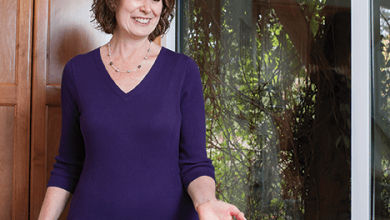Grains and Potatoes
Grains and potatoes helped build this country. Up until WWII we were a nation of physically hard working people, farmers and laborers. Starvation and malnutrition were common realities when floods, drought or pests ruined crops. Grains and potatoes kept people going in times of bounty and scarcity. It was cheap food, easily stored for consumption throughout the year, and saved for times of famine. Grains and potatoes kept people working from before dawn until the sun went down. When people didn’t have access to vegetables or protein they usually didn’t live as long, but starches kept them going from day to day.
Plow horses and race horses need grains. But when fattening animals to bring to market they are put in a crowded feed lot, to prevent them from exercising, and then fed grains. We’re no longer a nation of physically hard working people. Unlike plow or race horses most of us are more like the animals in feed lots. Many people eat the same grain and potato based diets our ancestors did but without the means to burn it off. Eating starches three or more times a day could be interfering with your digestion and making you tired, fat and lethargic.
How many grains and potatoes we eat, without adverse effect, depends on our physical activity during the day and our metabolism. Some people are able to eat anything and never gain an ounce. More grains and potatoes may be appropriate for them. For others just one piece of bread per day can add 10 pounds per year.
Before it was essentially abandoned, the last of many variations of the Food Pyramid advocated a minimal portion of fats and a huge base of grains. Unfortunately the low fat, high starch diet proved to increase nation wide obesity. Yet many people still believe a diet high in whole grains and low in fat is healthy. Good fats actually slow down the metabolism of starches giving us longer to burn them off.
We were told that whole grains were the key to a high fiber diet, necessary for digestion and overall health. But grains are a common cause of constipation. Many people don’t digest them well. Grains, like seeds and nuts, unless sprouted, soaked or fermented have enzyme inhibitors. This interferes not only with digesting the grains but also anything else we eat with them. But even soaked, sprouted or fermented grains can be too difficult for some people to digest on a regular basis. Some people can’t eat grains at all without adverse results to their health.
When younger we have more pancreatic enzymes to break down food. As we get older these enzymes are in shorter supply. We also typically have less hydrochloric acid in our stomachs for digestion. Consequentially, we can’t get away with eating all the things we did as kids, including a predominately grain based diet. Vegetables are a wonderful source of easily digestible fiber and introduce live enzymes that supplement our supply of pancreatic enzymes. Limiting grain consumption and increasing the variety and amount of vegetables consumed daily is often key in resolving constipation, weight gain and other digestive issues.
Whole grains are grains that haven’t had the outer husks removed. The outside layer provides the majority of nutrients. That outer layer also slows down assimilation of glucose. Whole grains are lower on the glycemic index than white rice, white flour, and other processed grains. So there is nutritional value in whole grains as long as you can digest and assimilate them.
Wheat and corn have been major cash crops throughout US history. Even before the biological alterations of GMO (Genetically Modified Organism) corn and wheat had been greatly altered from their origins by generations of cross breeding. The original Indian corn was 35 on the glycemic index. Brown rice is considered low at 55. The corn we have today is 75 on the glycemic index, the same as white sugar.
Bread used to be coarse and chewy. It took awhile to eat. The bread we have today is so soft because our modern wheat, whole grained or processed, has many times the amount of gluten that was in wheat just 60-100 years ago. That’s why there are so many people who are now gluten intolerant. Gluten can irritate the gut lining.
But corn and wheat are so altered from what they used to be that they now cause insulin intolerance for the majority of people, setting them up for weigh gain and diabetes. My protocol for reducing blood sugar for patients who are diabetic or borderline diabetic includes supplements to support various aspects of digestion, including the pancreas, and eliminating corn and wheat from their diets except for infrequent occasions.
Just to clarify, most baked goods such as breads, cookies, crackers, cereals, pastries, and also pastas are made from white, wheat flour that isn’t whole grain. Though it contains more nutrients, even whole grained or sprouted wheat can cause insulin insensitivity. With the rise of wheat intolerance other grains are being used more often.
Spelt is the oldest form of wheat, thus its more easily digestible than modern wheat. It doesn’t cause insulin insensitivity.
Corn is gluten free and used in many wheat free products. Unfortunately, as previously mentioned, it also interferes with the transport of glucose from the blood into the tissues for most people.
Rice is also a gluten free grain though it should be avoided for those suffering from constipation. Chinese nutritional medicine suggests rice, especially white rice, for cases of diarrhea since it “binds the bowels”.
Oats are the second most popular grain for breakfast food, though not gluten free.
Quinoa, millet, teff, and buckwheat, are gluten free and are gaining popularity both in baked goods and cooked on their own. All these grains are more easily digested when soaked overnight and well rinsed or sprouted.
You can now buy many grains already sprouted, which saves the step of soaking. These products have been dried after sprouting so look the same as non-soaked grains. Their packages are clearly marked “Sprouted.”
When shipping flour in sailing ships, much of what was transported, or stored in warehouses, was eaten by rats. Bleaching the flour makes it white and prevents rats from consuming it.
Breakfast has become a meal dominated by grains. But if you are eating oatmeal, granola, cereal, breads, pastries, breakfast bars, or other grain based breakfast foods it could be causing a slump of energy in the afternoon. Starches produce a spike of energy. It usually takes foods low on the glycemic index, like vegetables, to give people sustained energy throughout the day. Protein, which is converted to amino acids as opposed to glucose, is the other essential fuel for sustained energy and mental acuity.
White potatoes are high on the glycemic index so can cause peaks and crashes in energy and contribute to high blood sugar and diabetes. Eating them occasionally usually isn’t a problem unless you get a slump of energy afterward. Sweet potatoes, yams, and plantains are starches that can be digested easier than white potatoes and grains. How regularly you eat them depends on your metabolism, activity level, and whether you’re trying to gain or lose weight.
As I have mentioned in past articles, we are all biologically individual. There isn’t a correct diet for everyone. Once people have switched to a healthier diet it is easier to identify which foods provide energy and which foods create fatigue. If you’re tired after eating, chances are you’re eating the wrong foods for you. If you’re having problems with weight gain, constipation, or energy slumps try minimizing or eliminating` grains or all starches and slowly reintroducing them. Often simple alterations in diet can make a huge difference in your overall health and vitality.
Health and Happiness,
Nancy Burton, L.Ac.


